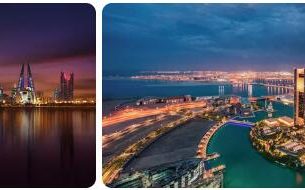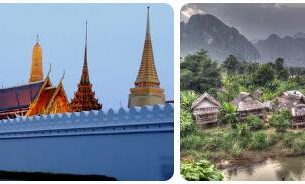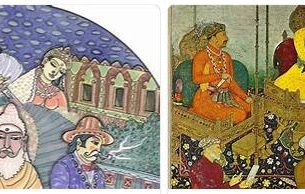The Philippines is an island state with 7,640 islands, of which around 1,000 are larger than 1 km² and around 460 are larger than 2.5 km².
A total of eleven islands cover over 2,500 km². The Chinese South Pacific stretches to the west of the Philippines and the Pacific to the east.
The Philippines was and is a deeply Catholic country. In 1995 the largest gathering in honor of a Pope, John Paul II, took place here. In his honor, between 4 and 5 million people gathered in Manila.
Before visiting Pope Benedict XVI. In late June 2006, the country’s president, Gloria Macapagal Arroyo (born April 5, 1947) signed a law abolishing the death penalty.
The death penalty had already been abolished in 1987 but was reintroduced in 1994. But it was not until 1999 that convicts were again executed with lethal injection.
The then President Joseph Estrada issued a moratorium as early as 2000, so that no one was executed afterwards. Even after Arroyo took office in 2001, there were no more executions.
It should be noted that the island nation is more frequently hit by tropical cyclones and is also known for President Rodrigo Duterte’s rigorous fight against drug addiction.
Every year on Good Friday dozens of men have themselves nailed to the cross and then hang on the cross for a few minutes to commemorate the suffering of Jesus. Others beat their backs bloody with whips for the same reason.
The center of this spectacle, tolerated by the Catholic Church, is the village of San Pedro Cudud near Manila.
The capital of the country is Manila.
| Name of the country | Republic of the Philippines |
| Form of government | Presidential Republic |
| Geographical location | Island nation in Southeast Asia |
| National anthem | Lupang Hinirang |
| Population | around 107 million (Credit: Countryaah: Philippines Population) |
| Ethnicities |
|
| Religions |
|
| Languages | Official languages: Filipino (based on Tagalog) and English;English is the business language;
numerous local languages and dialects are also in use; Spanish is hardly spoken. |
| Capital | Manila with approx. 12 million residents |
| Surface | 300,000 km² |
| Highest mountain | The highest mountain in the country is Mount Apo,a dormant volcano in Mindanao with a height of 2,954 m. |
| Longest river | Cagayan with a length of 350 km |
| Largest lake | Laguna de Bay on Luzon with an area of 194 km². |
| International license plate | RP |
| Currency | Philippine Peso (PHP) |
| Time difference to CET | + 7 h |
| International phone code | 0063 |
| Mains voltage, frequency | 220 volts, 60 hertz |
| Internet TLD (Top Level Domain) | .ph |
Philippines: history
The Portuguese Fernão de Magalhães (Ferdinand Magellan), who lived from 1480 to 1521 and undertook his conquests and discoveries for Spain, discovered the Philippines in 1521.
According to Abbreviationfinder website, the islands were named in 1554 after the Spanish King Philip II (1527 – 1598).
After the Spanish-American War in 1898, Spain had to cede the islands to the USA, whereupon the Philippines had the status of an American colony from 1902 to 1946.
However, the Japanese occupied the islands between 1942 and 1945.
The Philippines gained independence from the United States on July 4, 1946, when President Ferdinand Edralin Marcos (1917-1989), President of the country from 1965-1986, declared a state of emergency in the country in 1972. A year later, a new constitution was proclaimed that gave the president more power. In the same year the Moro National Liberation Front, a Muslim opposition movement, was formed.
After the overthrow of President Marcos in 1986, Corazón Cojuangco Aquino (born 1933) was elected President and a new constitution was proclaimed at the same time. Aquino ruled until 1992 and in the following years until 1989 there were six attempted coups. In 1992 she declined to run for a possible further term in favor of Fidel Ramos. After the election of Fidel Valdez Ramos (born 1928) as president, reforms were carried out with regard to participation in opposition groups and with regard to the economy and the environment. He held office until 1998.
After the election of Joseph Ejercito Estrada (born 1937) as president in 1998, Muslim separatists and left-wing insurgents rebelled, as a result of which the president was removed from office on January 20, 2001 and Vice-President Gloria Macapagal Arroyo (born 1947) was appointed president. Arroyo was confirmed in office on June 30, 2004.
During her reign, the kidnappings of tourists by Abu Sayaf supporters made headlines around the world. The country took part in the American war in Iraq. But after the kidnapping of a Filipino in Iraq in 2004, it bowed to the demands of the kidnappers and withdrew the troops in favor of the kidnapper’s release.
Due to the election of May 10, 2010, Benigno Aquino took over the office of President from his predecessor Arroyo. Arroyo’s term of office ended on June 30, 2010. Rodrigo Duterte (born 1945) has been President of the country since June 30, 2016.



